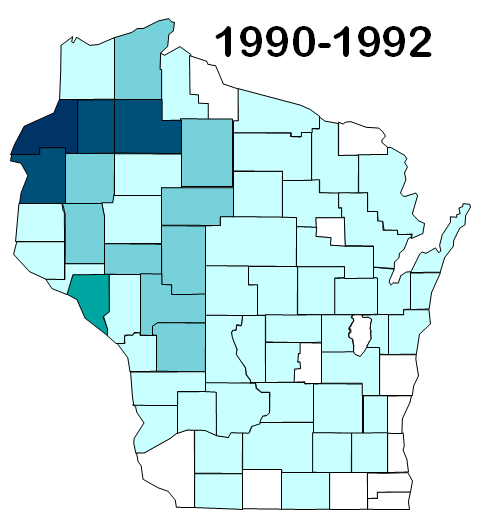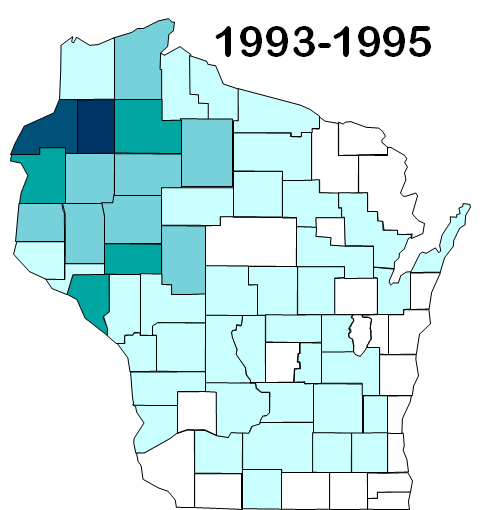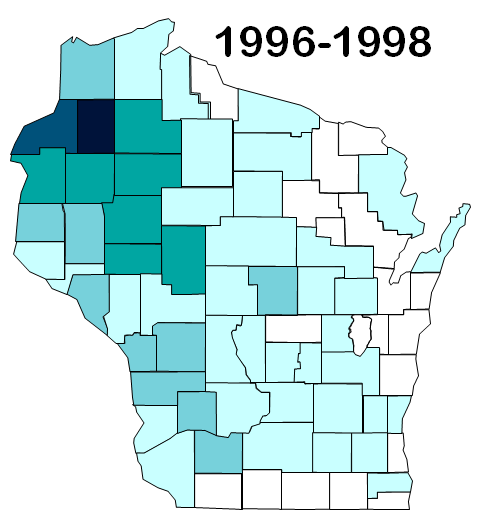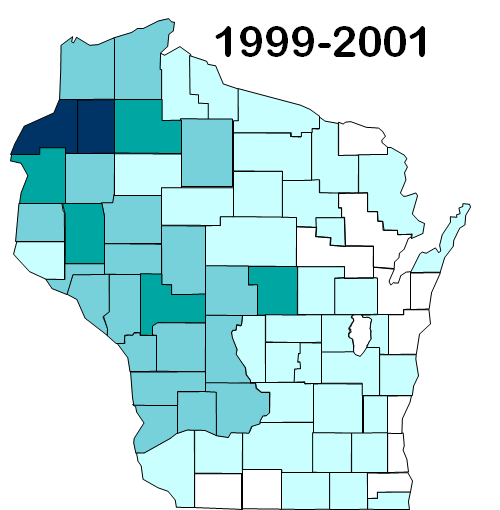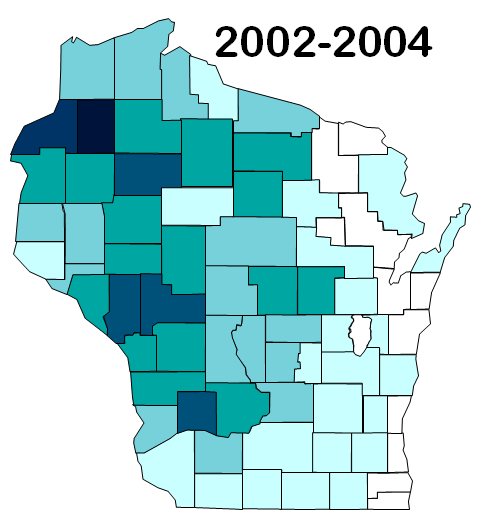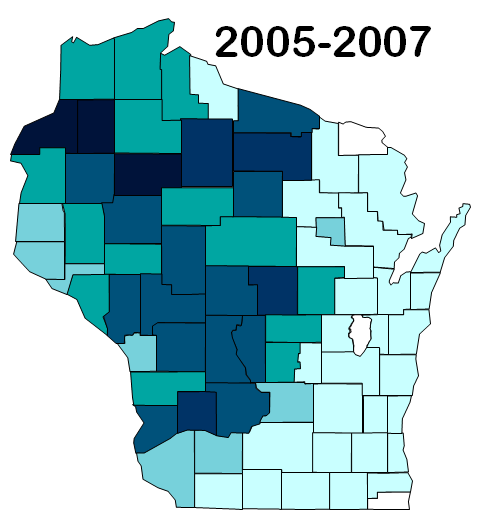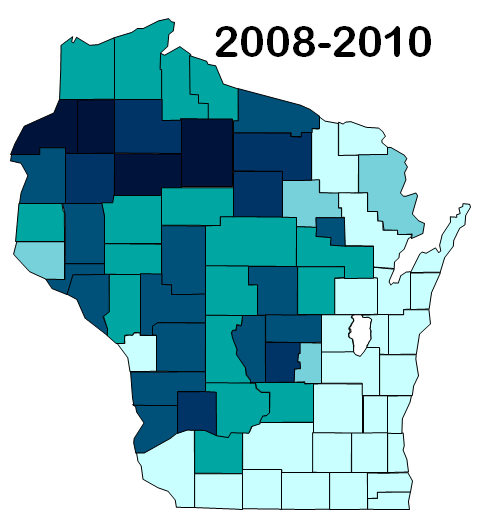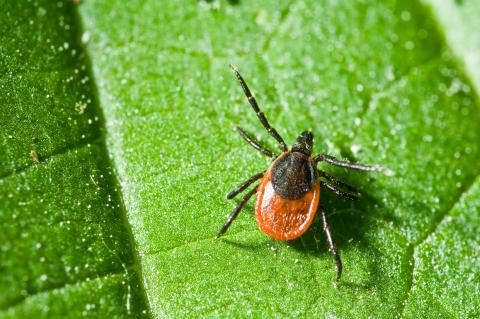About Lyme Disease
If you live in Wisconsin, it is likely you or someone you know has been affected by Lyme disease. Wisconsin reports some of the highest numbers of Lyme disease cases each year, along with Minnesota and several northeastern states. Lyme disease in Wisconsin used to be limited to a few counties in the northwestern portion of the state, but over the last few decades it has expanded into the southern and southeastern portions of the state. The average number of reported cases in Wisconsin has tripled over the past 15 years.
Lyme disease is an illness caused by the bacteria Borrelia burgdorferi, and rarely, Borrelia mayonii. It is spread to humans by the bite of an infected deer tick, also known as the black-legged tick. Lyme disease is the most commonly reported illness spread by ticks in Wisconsin. Deer ticks are present in all counties in Wisconsin.
Anyone can get Lyme disease, but people who spend more time outdoors are at a higher risk of being bitten by an infected tick. Ticks can be found in areas with woods, brush, or tall grass. Ticks are most active from May to November, but it is important to use caution year-round.
Check out our Lyme disease data page for more information. For specific, county-level data, please visit the easy-to-use Wisconsin Environmental Public Health Tracking portal.
Lyme disease is spread to humans through the bite of an infected deer tick
To prevent illness, it's important to remove ticks as soon as you find them. A tick must be attached for at least 24–36 hours to spread Lyme disease to a person.
Most people are infected by immature ticks, called nymphs. Nymphs are very small, about the size of a poppy seed. They are difficult to see, and most people may not feel their bite. This makes them harder to remove right away. Nymphs are most active during the spring and early summer.
Adult ticks also spread Lyme disease. Adults are larger than nymphs. They're more likely to be found and removed before the bacteria spread to a person. Adult ticks are most active during the cooler months.
Ticks can attach to any part of the body, but they are often found in hard-to-see areas, such as:
- Behind the knees.
- In the armpits.
- On the scalp.
- In and around the ears.
- Inside the belly button.
- On the groin.
Lyme disease is preventable and treatable. Learn about Tick Bite Prevention and how to properly remove a tick if you're bitten.
Be alert for fever or rash. Even if you do not remember being bitten by a tick, a fever or rash may be the first sign of Lyme disease. Contact your health care provider right away if you have either of these symptoms.
Early symptoms can show up three to 30 days after being bitten by an infected tick.
Early signs and symptoms include:
- Circular reddish, gray, or purple rash, depending on skin tone, also known as erythema migrans (EM) rash.
- Occurs in about 70 to 80 percent of cases.
- Expands in size over a period of days or weeks.
- May clear in the center as it gets bigger, giving it a "bull's-eye" appearance.
- NOTE: A small bump or redness at the tick bite site is common, and usually goes away in one to two days. This is not a sign of Lyme disease.
- Fever, sweats, chills
- Headache
- Fatigue
- Stiff neck
- Muscle and/or joint pain
Later symptoms can show up weeks to months after being bitten by an infected tick.
If left untreated, Lyme disease can affect other body systems. Later signs and symptoms include:
- Arthritis (joint swelling)
- Meningitis (brain and spinal cord swelling)
- Facial palsy (droop on one or both sides of the face)
- Heart abnormalities
- Nerve pain
- Shooting pains, numbness, or tingling in the hands or feet
Lyme disease can be treated with antibiotics. Most people treated with antibiotics during the early stages of Lyme disease recover completely. It is important to get treatment as soon as possible after symptoms start. Antibiotics commonly used for oral treatment include doxycycline, cefuroxime axetil, or amoxicillin.
If treatment is delayed, the bacteria can spread to the joints, heart, and nervous system and have long-term effects. Lyme disease can be difficult to treat in later stages, and severe cases may require intravenous treatment. Some people may have symptoms that will not go away or return even after appropriate antibiotic treatment, a condition called post-treatment Lyme disease syndrome (PTLDS).
Antibiotic treatment following a tick bite
Antibiotic treatment following a tick bite (also called tick bite prophylaxis or Lyme disease prophylaxis) can help prevent Lyme disease in certain people. If you recently had a tick bite, talk to your doctor about whether Lyme disease prophylaxis is a good option for you. Antibiotic treatment to help prevent Lyme disease must be taken within 72 hours of tick removal.
Even if you've received Lyme disease prophylaxis after a tick bite, it is still important to monitor yourself for symptoms of Lyme disease or another illness spread by ticks for at least 30 days.
Resources from the Wisconsin Department of Health Services
- Signs and symptoms, treatment, and prevention—Lyme Disease Fact Sheet, P-42070 (PDF)
- Education on the risk posed by Lyme Disease—Lyme Disease Risk in Wisconsin, P-01752 (PDF)
- Educational tri-fold card about ticks in Wisconsin, proper tick removal, and tick bite prevention—Tick Safety Guide Tri-Fold Card, P01434 (PDF)
- Fact sheet with simple steps to take—Protecting Your Family From Mosquitoes and Ticks, P-02080 (PDF)
Resources from the CDC
- Signs and symptoms, treatment, prevention, and more—About Lyme Disease
- Fact sheets, posters, signs, and other materials on Lyme disease—Educational Materials on Lyme Disease
- Information about long-term symptoms and Lyme disease—Chronic Symptoms and Lyme Disease
- Fact sheet on steps to take after a tick bite—Tick Bite: What to Do (PDF)
- Educational comic for kids—Don't Let a Tick Make You Sick Comic (PDF)
- Educational crossword for kids—Don't Let a Tick Make You Sick Crossword (PDF)
Partner resources
- Information from the University of Wisconsin-Madison Medical Entomology Laboratory—Wisconsin Ticks and Tick-borne Diseases
- Information on ticks found in the Midwest, surveillance resources, and tick biology and development from the Midwest Center of Excellence for Vector-Borne Diseases—Ticks
- Information on Lyme disease from our partners at the Minnesota Department of Health—Lyme Disease
Contact us
Questions about illnesses spread by ticks? We’re here to help.
Bureau of Communicable Diseases
Phone: 608-267-9003
Fax: 608-261-4976

